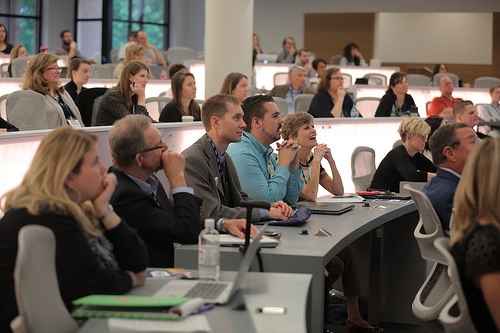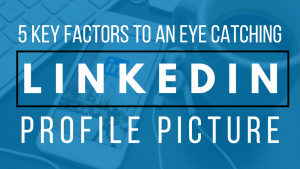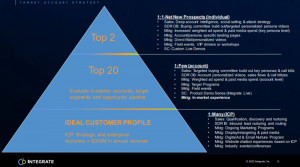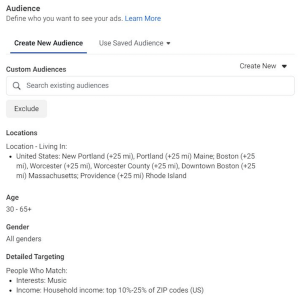— September 26, 2018
Professional trade associations are under fire. In fact, they have been for some time. Organizations like IABC, PRSA and AdFed are struggling to find their place in this new, highly competitive world of professional development and networking.

The common challenges?
“We need more members.”
“We need to engage more senior members.”
“We need to be relevant to our members.”
I feel like I keep hearing the same concerns year after year. Yet, in the world of professional trade associations, little changes.
They still have high membership fees that go almost completely to national organizations.
They still have the same conferences they had 20 years ago–and in some cases, they’re using the same speakers!
They still have the same “value prop”–we can provide you with professional development and networking.
The only problem is, everything else around them has completely changed.
For starters, more groups are now in the mix. Locally, MIMA is still relatively new. MN Search is definitely new. BMA wasn’t around 20 years ago. More organizations mean much stiffer competition.
We’ve also seen a huge proliferation of what I would call “networking groups.” These could be more formal in nature (Twin Cities Meet Up–remember that?). Or, they could be more informal (like the two “mastermind” groups I run locally here in Minneapolis). Point is: This is chipping away at these trade organization’s strange-hold on networking.
And finally, the professional development landscape has completely changed. There are now endless online options to learn about everything from content strategy to how to create Facebook ads. Countless new conferences and events have popped up in the last 5-10 years to serve these audiences. Everyone from solos to agencies to third-party vendors are now competing for this time and attention by offering up programming like this.
Point is: The professional trade organizations haven’t really adapted to an environment that’s essentially been flipped on its head the last 10 years. It’s a completely difference space than it was in 2008.
And, as a result, they’re struggling. If (when) the economy goes south, you’re going to see some of these organizations shut down (or, combine–which is an interesting notion). I believe that’s inevitable.
The bigger question I have is this: Is there still a need for the traditional professional trade organization in PR, comms and social media marketing?
Historically, I’ve been a huge supporter of these types of organizations. So, on the surface, I’d say yes–but, a few big things need to change in order for the progressional trade organization of 2018 to survive:
1: The membership revenue model needs to change–DRASTICALLY.
This is the root of many of the problems for many of these organizations. The lion’s share of your annual dues go straight to the national organization. However, the national organization provides little to no value for that money. Almost all of the value in your membership to these orgs is connected directly to the local chapter. I don’t have a big idea for this one, but I do know the current model needs to change. Soon.
2: The professional trade orgs need to start targeting solos and freelancers.
Hey, I don’t say this just because I’m a solo consultant. I say it because in 10-15 years, a substantial portion of the U.S. workforce (including us in comms/PR/social) will be working on our own. The stats and trend lines don’t lie. Yet, many of these organizations don’t even bother targeting solos with anything–professional development, networking opps, nothing. That needs to change. These people are already a key audience–in 10 years, they’ll be a PRIMARY audience.
3: Forget large-scale networking and focus on private networking.
The days where professional trade orgs could own networking opportunities are long gone. My advice: Ditch efforts to facilitate the big group networking events you’ve done in past, and instead, focus all your networking programming on getting smaller groups together in a more intimate setting. I’ve seen the thirst for this first-hand in the two mastermind groups I run, and in a few others people I know around town. People can network on their own now with all the tools available to them–they don’t need professional trade orgs for that anymore.
4: Redefine leadership criteria.
One struggle for a few of these trade orgs has been identifying and finding qualified people to sit on the board. Some orgs (PRSA) require professional certification to sit on the board. Others, tend to look for more senior-level folks to join their board. I’d look at it a little differently. I’d go younger (20-something millennials) and much older (50+ Boomers). Why? Because those are the groups who are more likely to have more time on their hands. You know who doesn’t have extra time on their hands? Parents of little kids, middle schoolers and even high schoolers! Plus, young people–often eschewed because they don’t have the experience–are full of ideas that can spark the change these trade orgs desperately need. Why wouldn’t you want more of these people on your board? And, more experienced pros have seen it all. Their wise counsel would offset the younger set perfectly. This just makes too much sense, doesn’t it?
5: Make volunteering a requirement for membership.
All trade organizations struggle with big thing that’s absolutely key to their existence: Convincing people to volunteer. Its the volunteers who do the lion’s share of the work for these organizations. From marketing to organizing events to working with students, volunteers do it all. But, they always have a hard time finding these volunteers. Why not make volunteering a REQUIREMENT when people sign up as a member? You wouldn’t have to ask for a ton of time. There could even be a minimum time commitment of 3-5 hours a month. Who doesn’t have 3-5 hours a month? Think if ALL your members were donating 3-5 hours a month? How productive would your org be? Of course, people could and would volunteer more time than that. But, making it a REQUIREMENT from the get-go would change everything.
photo credit: bobbyrettew _O8A6151 via photopin (license)
Business & Finance Articles on Business 2 Community
(41)







